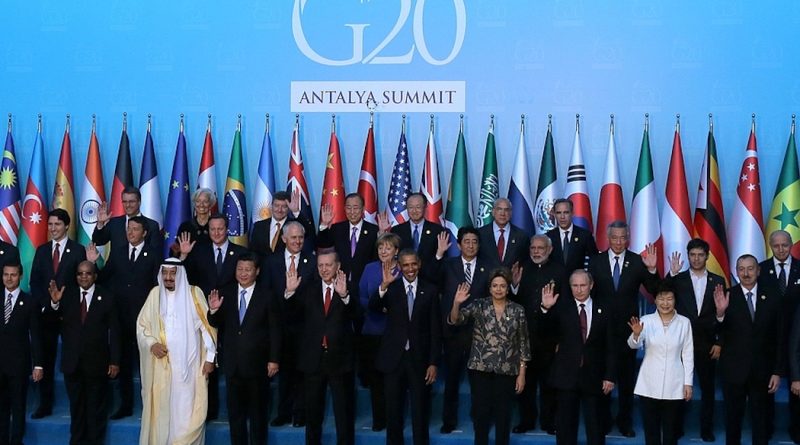2016 G-20 Summit Highlights
 Rose Rucoba
Rose Rucoba
Staff Writer
Representatives from 20 different industrialized nations around the world gathered for the G-20 Summit meeting in Hangzhou, China on Sept. 5.
The delegates represented about 80 percent of the global economic production.
They met to discuss the global economy in terms of all future and ongoing economic goals they had for creating and ensuring a better international economy.
This was President Obama’s last summit meeting of his presidency and a cause for celebration. When the president attended his first summit meeting back in 2009, the world’s economy was in a shoddy state and recovery looked like it was a long way away.
Today, the world economy is back on track and Obama celebrated how far the world economy has come since then.
That being said, many hot topics—and subsequent resolutions—were discussed at this year’s G-20 summit meeting.
Two major issues that were discussed were steel surplus and climate change.
Major steel producers such as Russia and China are flooding the international steel market, causing drastically lower prices, the factory closures, and increased unemployment across the globe.
Delegates at this year’s summit talked about how to regulate steel production and supervise its overproduction.
These measures include anti-dumping laws, or tariffs put in place to prevent materials being sold at too low of a market price, and other laws to prevent over-production.
The G-20 members said they will revisit the steel issue and report their progress in 2017.
In terms of climate change, work to promote the reduction of emissions was the main goal.
According to the White House, the U.S. has headed the Transport Task Group since it was established in 2014. The group aims to reduce carbon pollution and is expected to reduce pollution for heavy-duty vehicles by 1.1 billion metric tons and in turn save consumers $170 billion.
The article also stated that G-20 delegates anticipate success at both the Montreal Protocol and International Aviation Council negotiations, which will help reduce global warming by half a degree Celsius by the end of this century, and help reduce aviation emissions.
While the much-avoided topic of climate change did make this list, it was not given top priority, and so was not discussed until near the end of the meeting.
In addition to these hot topics, many other global and economic issues were discussed and are outlined below from an article from the White House:
Fair Trade for All
- Lower tariffs on environmental goods by the end of the year
- Support international tax system that is fair for all
- Plan to intensify efforts to stop tax evasion, terrorist financing, and money laundering
- Pushed ratification of World Trade Organization’s Trade Facilitation Agreement that says bureaucracies cannot hinder shipments being shipped worldwide
- WTO agreement aims to spur trade growth around the world
Global Economy
- Set fair wages for all, especially lower/middle class workers
- Increase opportunities for women and children in jobs worldwide
- Promote more opportunities for apprenticeships
Technology and Digital Economy
- All delegates promoted Internet as way for society to grow and progress
- Support digital trade
- Want to ensure next 1.5 billion people have access to Internet by 2020
- Increase access to Internet for education
- Intensify cyber-security, take action against cyber-stealing
Overall, this year’s summit meeting touched on several modern and legitimate problems in the world today.
While the 2016 G-20 summit had both high and low points, progress can be seen simply in how far the world’s economy has come since President Obama came into office four years ago.
As efforts to combat the issues discussed earlier this month unfold over the next year, the G-20 delegates will, once again, be put to the test in establishing a fair and successful world economy.

